The Gospel of Matthew
by Judy Jeschke
The Promised Messiah, Fulfilling the Law of Moses
Key Verse: Matthew 16:15-19 “But what about you?” Jesus asked. “Who do you say that I am?” Simon Peter answered, “You are the Messiah, the Son of the living God”. Jesus replied, “Blessed are you Simon son of Jonah, for this was not revealed to you by flesh and blood, but by my Father in heaven. And I tell you that you are Peter, and on this rock I will build my church and the gates of Hades will not overcome it. I will give you the keys of the kingdom of heaven, whatever you bind on earth will be bound in heaven, and whatever you lose on earth will be lost in heaven”.
Matthew’s gospel tells us that Jesus is the Promised One (“The Messiah”), the Son of God; he came not to destroy the Law of Moses, but to fulfill it and to teach us a more excellent way of life as members of a new community, the Church, the Body of Christ. This Christian Church is the new holy nation, destined to embrace all of humankind.
Matthew presents Jesus as the fulfillment of Biblical prophecy. Some scholars have argued that these five discourses are comparable to the Five Books of Moses (“The Pentateuch”)
1. Matthew 5-7, The New Law, which fulfills the old Law. This is how people in Jesus’ new community, the Church, are to live out the rule and reign of God, which has come in Jesus, and is yet to reach it’s complete fulfillment.
2. Matthew 9:36-10:42, Apostleship, the disciples are chosen and sent out to proclaim the Good News
3. Matthew 13:1-53, Parables about the Kingdom of Heaven, spoken to the crowds.
4. Matthew 17:22-18:35, Addressing problems that will inevitably come in the end of the age and divine judgement
5. Matthew 21:1-26:1, Jesus’ Apocalyptic message, the end of the age, and divine judgement.
Matthew presents Jesus teaching as a contract to, not a repudiation of, the Law of Moses, but he does say this righteousness exceeds even that of Moses, and so fulfills it! Matthew believes that Judaism was meant to naturally pass into the Christian faith, as if following Jesus is the manifest destiny of the Jewish faith and following the Law of Moses.
Main features of Matthew’s writing:
1) Matthew constantly uses quotations from the Old Testament to connect Jewish prophesy to the Person and work of Jesus Christ.
2) Matthew uses the term “the Church”. No other Gospel does. Matthew does not view the Church as a human organization of institution, but a functioning community.
3) The Christian Church is the new Israel. The Lord Jesus Christ, ascended to the Father in heaven, is at the center of what is the new true Israel.
4) Matthew presents a positive Christian morality. Christian morality, which Jesus says is a matter of the heart, is never equivocal. It challenged the self-righteous morality of the Jews and the immorality of the Gentiles.
5) The ‘kingdom of heaven’ is Jesus’ main theme and Matthew’s preoccupation. The Church represents a piece of that kingdom, but it fullness and fulfillment is yet to come. But the kingdom is apparent in Jesus and results in amazing teaching combined with mighty works (miracles).
6) Peter has more prominence in Matthew’s Gospel. Peter becomes a representative, spokesperson, and leader among the disciples.
7) The final emphasis of Matthew’s Gospel is evangelism and discipleship. Matthew opens with the simple statement that Jesus is the Messiah, the Promised One of God, and it closes with a simple statement of what Jesus’ disciples are to do – make more disciples.


